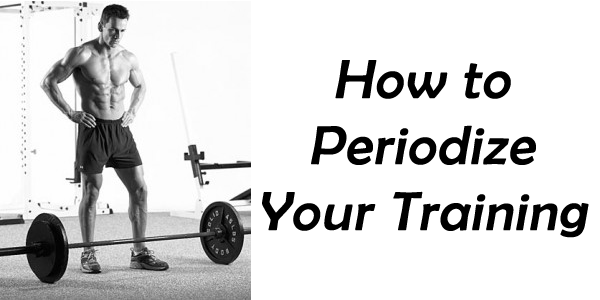
When you train it is easy to get stuck in a rut. If you periodize your training you present your body with new challenges and some variation. This helps to keep the momentum that you build as you go along. This will help you avoid plateaus completely when done correctly. I personally use periodization in my system all the time.
What does it mean to periodize your training?
In its most basic form, you break your year up into blocks of time and then change up your workout during each of those blocks of time. When you periodize your training you are able to schedule in rest weeks to recovery fully from the hard work you've put in. Your training is less haphazard and more on point.
One way to periodize your training
As mentioned, I always periodize my training and I see many different benefits to it beyond just the physical aspects. Yes, your body needs to have new challenges and that's a big reason to periodize your training, but there are also psychological benefits as well. What do I mean? Read on!
I periodize my training into 12 week blocks of time, so I essentially have 4 blocks each year. My periodization works as follows:
12 weeks of full body HIT workouts. 3 days a week. Moderate to heavy weight.
12 weeks of body part split training. 5 days a week. Heavy weight.
12 weeks of Y3T. 5 days a week. The weights vary as Y3T itself is a periodized plan with a 3 week cycle, so I do 4 cycles.
12 weeks of body part split training. 4 days a week. Upper/Lower. Moderate weight.
So how does this have any kind of psychological benefit? I am the type that gets bored very easily. If I had to stick to a plan that is weeks and weeks of the same thing I would probably shoot myself in the head. With the periodized schedule above I have new workouts to look forward to. Each plan I use has a different approach.
For instance, my HIT workouts involve one set of each exercise all the way to failure. It is a full body approach that has me lifting 3 days a week. Then there is my body part splits. I do two types. One is the typical one to two parts a day for 5 days each week and the other is an upper/lower split. Again, the approach is varied and keeps me engaged. Finally there is Y3T. It is actually an amazing system put together by Neil Hill for Flex Lewis. I got some amazing mass gains using the program so I have inserted it into the rotation.
The way I think the mandate to periodize your training is that you have a tool belt (the exercises and programs you can use to train) and each block of time is a tool in that tool belt. The more tools you acquire that do the job well the better you will be at what you are doing.
3 methods to periodize your training
There are 3 main groups to periodize your training.
- The sequential method of periodization. This method uses specific time intervals for developing a specific training goal. This can involve having a block of 3 weeks to focus on strength, then another block of 3 weeks to focus on hypertrophy, etc. This would be a long linear method. There is also the same approach, but with shorter periods of time. That would be a short linear method. There is also the undulating method where the periodization comes in a wave of continuous changes. It is truly the worst method mentioned so far.
- The concurrent method of periodization. This method develops all abilities at one time. There is the ordinary method which uses one microcycle per week to develop all areas at one time. There is also the emphasized concurrent method. The only difference from the ordinary method is that one aspect is focused on more than the others, yet all aspects are worked on at the same time.
- The conjugate sequence system. This is by far the most advanced method of periodization. This method takes the pros and cons of the sequential and concurrent methods and merges the good while avoiding the bad. It is quite similar in methodology to the sequential system in that it focuses on one area for a time period and then switches to another and then another.
Conclusions
Honestly, the most important thing to remember about periodization is that you need to change things up on a regular basis. Using an arm workout (for example), if you are doing all barbell curls, change to dumbbell curls. If you are using all standing exercises, try some sitting exercises. You can change the angles as well. Vary the number of sets you are doing. Change up the repetition range you use as well. All of these things will keep you from plateauing. Give it a try!
